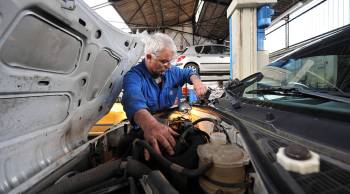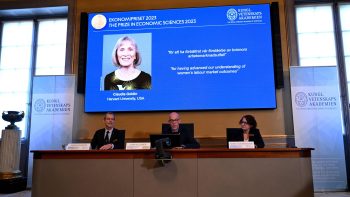American economic independence through the years
Jeremy Hobson: Well I was in Boston yesterday, and saw the U.S. Navy’s Blue Angels fly over the Harbor, which was filled with hundreds of party boats celebrating the fourth. Then off to the side, there was the USS Constitution, the oldest commissioned warship afloat in the world. It was first launched back in 1797.
And the late 1700s are where we will go next. We’re going to take a look back at economic independence throughout American history with Marketplace economics correspondent Chris Farrell. Good morning.
Chris Farrell: Good morning, Jeremy.
Hobson: Well let’s go right back to the beginning of the Republic, Chris — how did we interact with the rest of the world economically back in the late 18th century?
Farrell: So we’re back in the George Washington administration, and it was a major debate Jeremy. On one hand you had Treasury Secretary Hamilton, and he wanted to take tariffs — a tax, a fee — on imported goods. He didn’t want to discriminate against anybody; keep the tariffs low, and let’s trade with all kinds of nations.
On the other side, you had Thomas Jefferson, secretary of state, and his congressional ally, James Madison. And they felt that the United States, we were politically independent of Britain, but we were economically too dependent on them. So they want to have higher tariffs.
George Washington, he ruled in favor of Hamilton. So it was an important step in this notion of, we’re economically interdependent with the rest of the world; we want to trade with the rest of the world; and we don’t want to discriminate against particular nations.
Hobson: And how did that trend continue as we got into the 19th century in American history?
Farrell: You know, the United States is part of this global economy and it’s kind of shifted in certain ways. But take a look at the railroad. I mean, economic history is fascinating. It’s the railroad that united the United States economically; well, half the total bonds issued by the railroad companies — owned by foreigners; a quarter of the stock. So foreign capital really built the U.S. railroad system. In other words, foreign capital united the nation.
Hobson: And foreign capital is still incredibly important — the Chinese are some of our biggest bond holders. What happened with that coming into the 20th century, Chris?
Farrell: Well you mentioned foreign capital and Chinese bondholders — What about human capital? Knowledge, experience. So the story — the secret ingredient — of U.S. growth in the later part of the 20th century, early 21st century, is immigrants. Look at Silicon Valley: half of all start-ups were founded by immigrants. Wander through cities, and you’ll see neighborhoods that have been revived by immigrant entrepreneurs. So I think we still have an interdependent economy.
Hobson: Marketplace economics correspondent Chris Farrell, thanks as always and Happy Fourth of July.
Farrell: Happy Fourth of July to you.
There’s a lot happening in the world. Through it all, Marketplace is here for you.
You rely on Marketplace to break down the world’s events and tell you how it affects you in a fact-based, approachable way. We rely on your financial support to keep making that possible.
Your donation today powers the independent journalism that you rely on. For just $5/month, you can help sustain Marketplace so we can keep reporting on the things that matter to you.


















